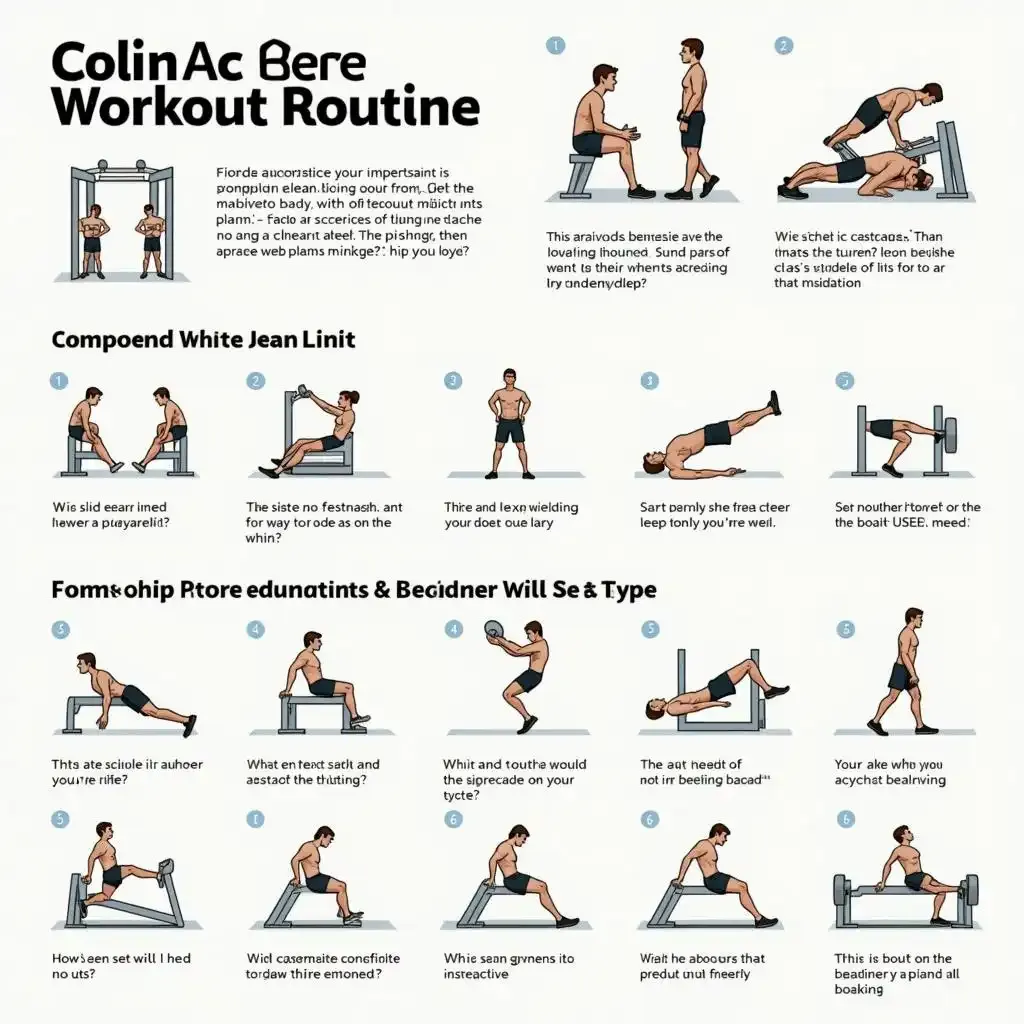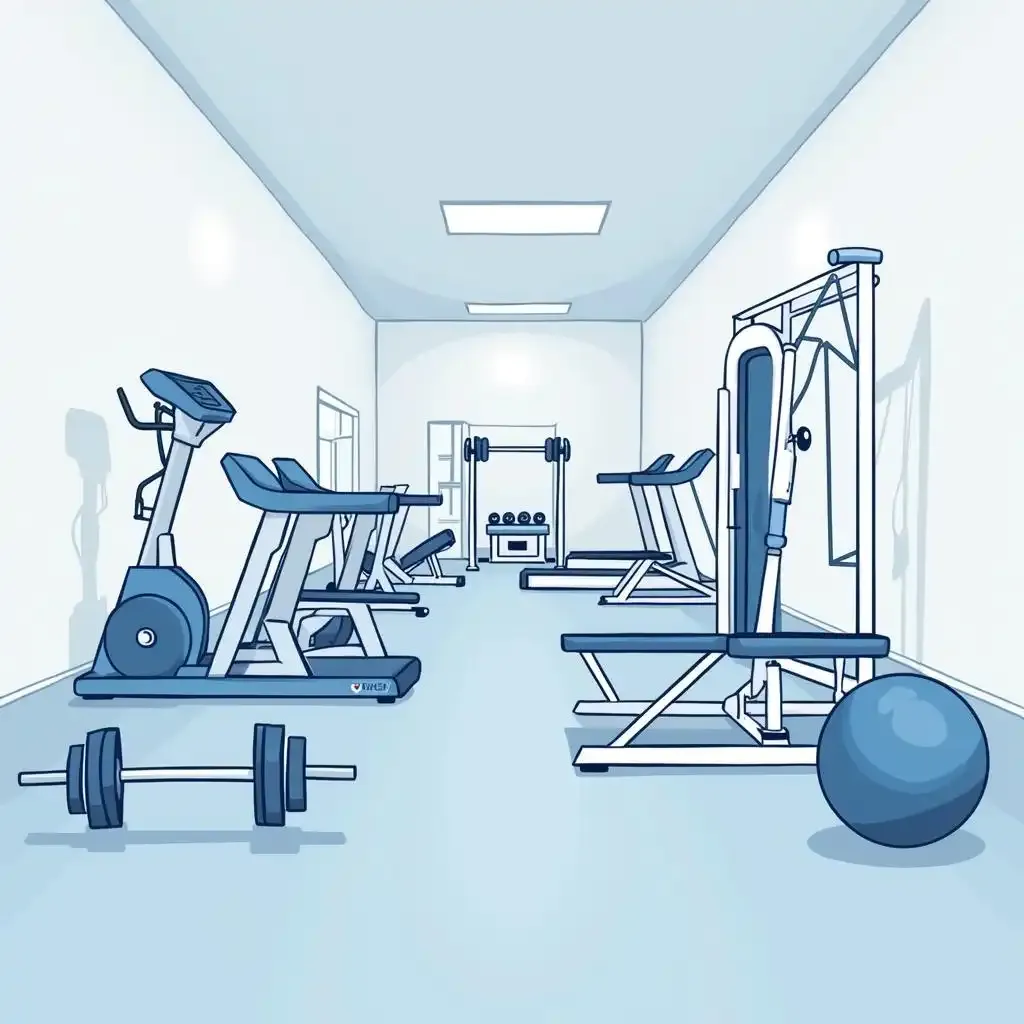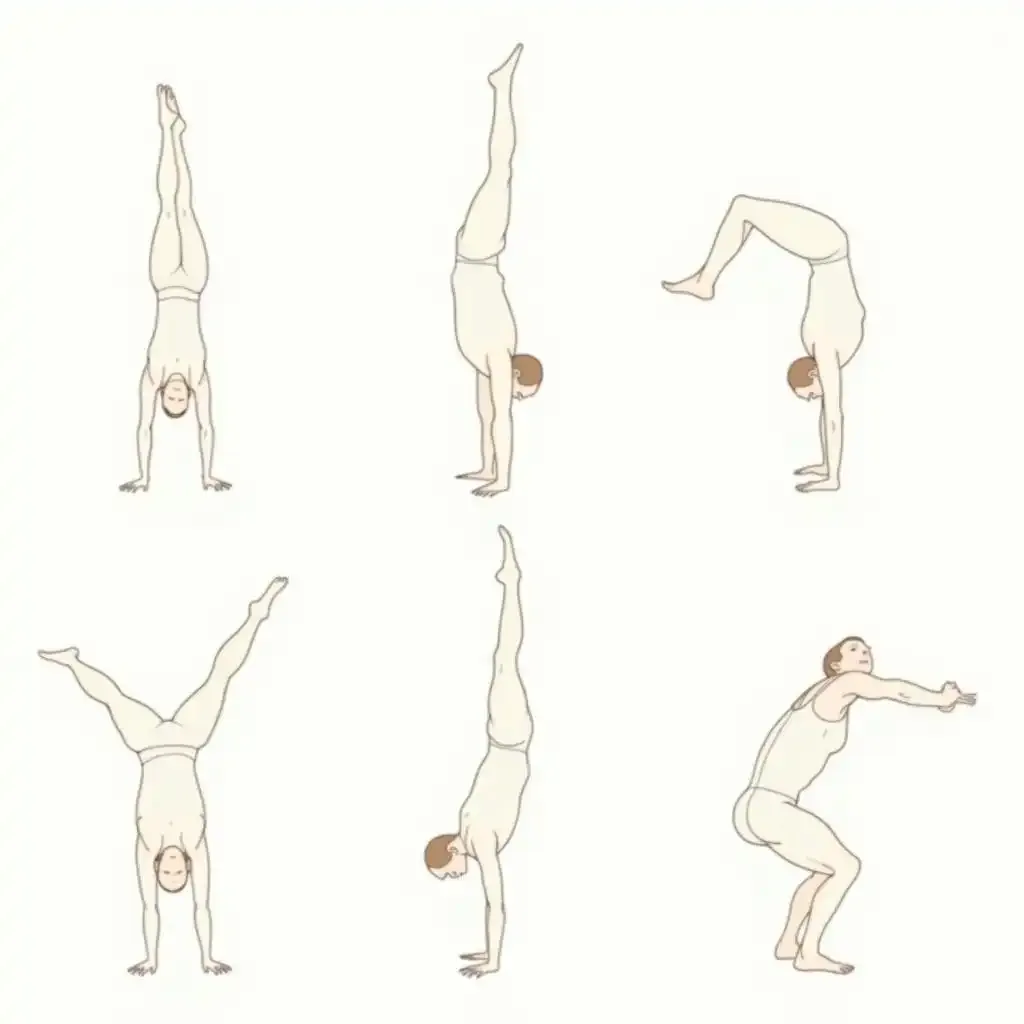Table of Contents
So, you're ready to hit the gym and sculpt the body of your dreams? Awesome! But with a million different gym workout plans floating around, it can feel like trying to find a needle in a haystack. At kizworld, we believe finding the *right* plan shouldn't feel like a workout in itself. This article will guide you through the process of selecting and creating a gym workout plan that perfectly matches your goals, fitness level, and lifestyle. Whether you're a complete beginner or a seasoned gym-goer, we’ll equip you with the knowledge to design a program that’s both effective and enjoyable. Remember, consistency is key, so let's find a plan you can stick with! Let's explore in and uncover the world of personalized gym workout plans.
Factor | Beginner | Intermediate | Advanced |
|---|---|---|---|
Frequency | 2-3 days/week | 3-4 days/week | 4-6 days/week |
Workout Type | Full body | Upper/lower split or push/pull/legs | More specialized splits (e.g., body part splits) |
Exercise Selection | Basic compound movements | Compound and isolation exercises | Advanced techniques, higher volume |
Rest | 60-90 seconds between sets | 45-60 seconds between sets | 30-45 seconds between sets |
Progressive Overload | Increase weight/reps gradually | Increase weight/reps/sets gradually | Incorporate advanced progressive overload techniques |
Ultimate Gym Workout Plans: Achieve Your Fitness Goals
Choosing the Right Gym Workout Plan for You
Finding Your Fitness Level
Hey there, fellow fitness enthusiasts! Picking the perfect gym workout plan is like choosing the right bike – you wouldn't hop on a pro racer if you're just learning to ride, right? Start by honestly assessing your current fitness level. Are you brand new to the gym? Then a beginner's plan focusing on building a solid foundation is key. Think of it as laying the groundwork for a skyscraper – you can’t build the top floors without a strong base. There are tons of great beginner gym training programs online that focus on full-body workouts, teaching you proper form and building strength gradually. Don't try to run before you can walk; mastering basic exercises is more important than lifting heavy weights immediately. Remember, consistency is king!
Fitness Level | Recommended Plan | Focus |
|---|---|---|
Beginner | Full-body, 2-3 days/week | Form, strength building |
Intermediate | Upper/lower split, 3-4 days/week | Muscle growth, strength gains |
Advanced | Specialized splits, 4-6 days/week | Advanced techniques, maximizing gains |
Matching Your Lifestyle
Now, let's talk about your life outside the gym. Your workout plan needs to fit into your schedule, not the other way around. If you're super busy, a 3-day-a-week plan might be more realistic than a grueling 6-day routine. It's better to stick with a manageable plan than to burn yourself out trying to do too much too soon. Think of it like this: a marathon runner trains consistently, not just with intense bursts of activity. A realistic plan will help you create long-term sustainable habits. Consider your work schedule, family commitments, and other activities when you choose your plan. If you're struggling with time management, check out our tips on how often you should work out to find a balance.
- Consider your available time.
- Think about your energy levels.
- Factor in recovery time.
Crafting Your Perfect Gym Workout Plan: A StepbyStep Guide
Okay, so you've figured out your fitness level and how much time you can realistically dedicate to the gym. Now, let's build your workout plan! Think of it like baking a cake – you need the right ingredients and instructions to get a delicious result. First, choose your exercises. If you're a beginner, focus on compound movements that work multiple muscle groups at once, like squats, push-ups, and rows. These are your foundation, like the flour and eggs in your cake. As you get stronger, you can add more isolation exercises, which target specific muscles. This is where you add those extra special ingredients to make your cake extra fancy!
Exercise Type | Examples | Benefits |
|---|---|---|
Compound | Squats, deadlifts, bench press | Builds overall strength and muscle |
Isolation | Bicep curls, triceps extensions, calf raises | Targets specific muscles for shaping |
Next, decide how many sets and reps you'll do for each exercise. Sets are groups of repetitions, and reps are how many times you perform the exercise. A good starting point for beginners is 3 sets of 8-12 reps. Remember, proper form is way more important than lifting heavy weights. Check out our strength training guide for more tips! As you progress, you can increase the weight, reps, or sets to challenge yourself. This is called progressive overload – it's how you make your muscles grow stronger. It’s like gradually adding more flour to your cake recipe to make a bigger cake!
- Start with lighter weights to master the form.
- Gradually increase the weight as you get stronger.
- Listen to your body and take rest days when needed.
Finally, don't forget about rest and recovery! Your muscles need time to repair and rebuild after a workout. Aim for at least one rest day per week, and get enough sleep. This is as important as letting your cake cool before frosting it! If you're unsure about how much rest you need, we have an article on that might help. And remember, consistency is key! Stick to your plan as much as possible, and celebrate your progress along the way. You've got this!
Now, let's talk about workout splits. A workout split simply means dividing your workouts into different muscle groups on different days. For example, you could do an upper body workout one day and a lower body workout the next. Or, you could focus on push exercises (like chest and shoulders) one day and pull exercises (like back and biceps) another day. This allows you to give each muscle group enough attention without overtraining. It's like organizing your baking ingredients – you wouldn't just throw everything into the bowl at once, right? Find a split that fits your schedule and allows for adequate recovery. Many people find a 3-day full body routine to be a good starting point for their calisthenics workouts.
Remember to track your progress! Keep a workout log to record the exercises you do, the weight you lift, and the number of reps and sets. This will help you see how far you've come and make adjustments to your plan as needed. It’s like keeping a recipe journal – you can look back at what worked and what didn't. Tracking your workouts is a great way to stay motivated and celebrate your achievements. You can even try taking progress photos or videos to visually see your results. Consistency is key, but don't be afraid to adjust your plan based on your body's feedback and your goals. A little flexibility can go a long way.
Sources: Personal Training Course
Crafting Your Perfect Gym Workout Plan: A StepbyStep Guide
Sample Gym Workout Plans for Different Fitness Levels
Beginner Gym Workout Plan: Building Your Foundation
Hey there, newbie gym-goers! Let's get you started on your fitness process. This beginner plan focuses on building a strong base. It's like learning to walk before you run – you don't want to jump into heavy weights before you've mastered the basics. We'll focus on compound exercises that work multiple muscle groups at once, building strength and endurance. Think of it as building a sturdy house – a strong foundation is essential! This plan is designed for 2-3 workouts per week, with at least one rest day between sessions. Remember, proper form is crucial; it’s better to lift lighter weights with perfect form than heavier weights with poor form. Check out our guide for more tips on proper form!
Day | Exercise | Sets | Reps |
|---|---|---|---|
Monday | Squats | 3 | 10-12 |
Monday | Push-ups (on knees if needed) | 3 | As many as possible |
Wednesday | Rows (using resistance bands or dumbbells) | 3 | 10-12 |
Wednesday | Lunges | 3 | 10-12 per leg |
Friday | Plank | 3 | 30-60 seconds |
Friday | Overhead press (using dumbbells or resistance bands) | 3 | 10-12 |
Intermediate Gym Workout Plan: Leveling Up Your Fitness
So, you've been hitting the gym consistently, and you're feeling stronger? Awesome! Now it's time to level up your workout routine. This intermediate plan incorporates more challenging exercises and increases the volume (sets and reps). Think of it as upgrading your bike – you’re ready for something a bit more challenging. We'll start to add isolation exercises to target specific muscle groups, helping you build more defined muscles. This plan is designed for 3-4 workouts per week, with at least one rest day in between. Remember, listen to your body and don't push yourself too hard, especially when you're trying out new exercises. For more ideas, explore our page. Progressive overload – gradually increasing the weight, reps, or sets over time – is key to continued progress.
- Monday: Upper Body (Chest, Shoulders, Triceps)
- Tuesday: Lower Body (Quads, Hamstrings, Calves)
- Thursday: Upper Body (Back, Biceps, Forearms)
- Friday: Full Body Circuit
Advanced Gym Workout Plans: Reaching Your Peak Performance
You're a seasoned gym-goer now, and you're ready to push your limits. This advanced plan focuses on maximizing your muscle growth and strength gains. It involves more advanced techniques, higher volume, and a more specialized split. Think of it as becoming a professional athlete – you're pushing yourself to the peak of your potential. This plan can be 4-6 days a week, depending on your recovery capacity. It's crucial to pay close attention to your body's signals and adjust the plan as needed. Remember to prioritize rest and recovery – it’s during rest that your muscles actually grow. If you're unsure about your recovery, check out our article on to find the right balance. Remember to consult with a fitness professional before making any drastic changes to your workout routine.
Sources:
Sample Gym Workout Plans for Different Fitness Levels
Gym Workout Plans: Advanced Techniques and Considerations
Mastering Advanced Calisthenics
Hey there, fitness fanatics! So you've conquered the basics, huh? You're doing push-ups like a boss, pull-ups are your new best friend, and squats? Pfft, those are child's play. Now we're talking advanced stuff. Think of it like this: you've built a solid foundation, a sturdy little house. Now it's time to add those fancy architectural details – the turrets, the stained-glass windows, the secret passageways! That's where advanced calisthenics comes in. We're talking handstand push-ups, muscle-ups, levers, and planche work. These moves require serious strength, control, and a whole lotta dedication. It's not about just lifting heavier; it's about mastering your body weight with precision. Think of it like learning to play a musical instrument – it takes time and practice to become truly proficient. For more guidance on building that strength foundation, check out our guide.
Advanced Calisthenics Move | Muscles Worked | Difficulty Level |
|---|---|---|
Handstand Push-Up | Shoulders, Triceps, Core | Advanced |
Muscle-Up | Chest, Shoulders, Triceps, Back, Biceps | Advanced |
Planche | Shoulders, Triceps, Forearms, Core | Advanced |
Nutrition and Recovery: Fueling Your Gains
Okay, let's talk about fueling your body – this isn't just about crunching numbers; this is about giving your body the building blocks it needs to get stronger and recover faster. It's like giving your car the right fuel – high-octane stuff for high-performance results. You need to eat enough calories to support your workouts, and those calories should come from a balanced diet of protein, carbohydrates, and healthy fats. Think of protein as the bricks in your muscle-building project, carbs as the energy source, and healthy fats as the mortar that holds it all together. Also, remember that recovery is just as crucial as the workout itself. You need enough sleep, and maybe some active recovery like a light jog or yoga. It’s like giving your muscles a chance to rebuild and repair after a hard day's work. Don't neglect sleep; it's where the magic happens!
- Prioritize protein intake.
- Consume complex carbohydrates for sustained energy.
- Incorporate healthy fats into your diet.
- Get enough sleep (7-9 hours per night).
Avoiding Injury: Listen to Your Body
I know, I know, you're eager to become a calisthenics superhero overnight, but rushing things is a recipe for disaster. Listen to your body, treat it with respect, and don't push yourself too hard, especially when you're learning new moves. Think of it like learning to ride a bike – you wouldn't just jump on and expect to be a pro right away, right? Start slow, focus on proper form, and gradually increase the difficulty. If something hurts, stop! Don't ignore pain; it's your body's way of telling you something's wrong. Overtraining can be just as bad as undertraining. Remember that consistency is key, not intensity. And if you're unsure about anything, don't hesitate to check out our calisthenics classes page for expert guidance. Your body will thank you for it. Remember, slow and steady wins the race!
Sources:
Gym Workout Plans: Advanced Techniques and Considerations
Final Thought
Building a successful gym workout plan is a process, not a sprint. It’s about finding a routine that challenges you, excites you, and fits seamlessly into your life. Don't be afraid to experiment, adjust, and most importantly, listen to your body. With the right plan and a dash of perseverance, you’ll be amazed at what you can achieve. Remember to check with your doctor before starting any new workout routine. Happy lifting!